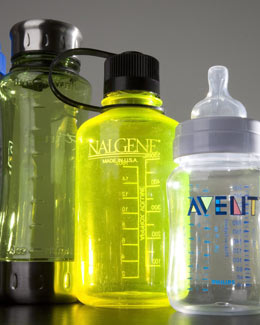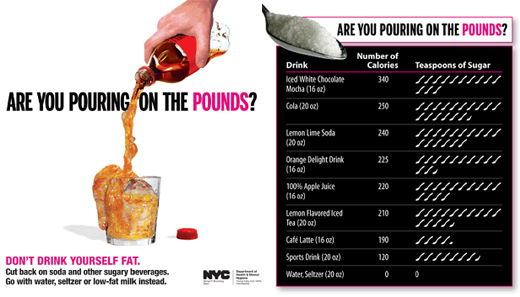December 12th, 2009 by Happy Hospitalist in Better Health Network, Humor
No Comments »

So I went to eat my free daily lunch offering the other day in the doctors lounge when I noticed that a giant plate of enchiladas was just about empty. At 10:35 am. It’ not every day you get a free hot meal at Happy’s hospital, I would like to thank the Medicare National Bank for paying for my meals.
Generally,Happy’s doctors lounge offers a fine consistent assortment of cold salads, sandwich meats and several soup offerings. I found myself wondering exactly how much money I save every year by eating lunch in the doctors lounge. I remember Mrs Happy’s daily lunch bills when she worked in the hospital. It can add up pretty quick for nurses without the secret handshake to get in to the doctors lounge. Read more »
*This blog post was originally published at The Happy Hospitalist Blog*
December 1st, 2009 by Dr. Val Jones in Audio, Expert Interviews
1 Comment »
 There has been a lot of media attention surrounding the safety of polycarbonate plastic products containing bisphenol A (BPA). BPA is found in polycarbonate, hard clear plastic products like eye glasses, bicycle helmets, and food containers, and also in epoxy resins that act as protective coatings on everything from food and beverage cans to steel pipes and car engines.
There has been a lot of media attention surrounding the safety of polycarbonate plastic products containing bisphenol A (BPA). BPA is found in polycarbonate, hard clear plastic products like eye glasses, bicycle helmets, and food containers, and also in epoxy resins that act as protective coatings on everything from food and beverage cans to steel pipes and car engines.
In the next week or so, the FDA is expected to provide a new analysis of the science behind BPA safety. To gain some insight into what the fuss is all about, Dr. Steve Novella and I interviewed Dr. Steven Hentges (Executive Director of the Polycarbonate/BPA Global Group of the American Chemistry Council) on a blogger briefing call.
You may listen to the entire conversation here (and please read on for my summary of the issues):
[audio:https://getbetterhealth.com/wp-content/uploads/2009/12/bpacall.mp3]
Read more »
November 20th, 2009 by admin in Better Health Network, Research
No Comments »


As if we haven’t seen enough bad press for low carb diets, check this out: a study just published in the Archives of Internal Medicine found that dieters who followed a low carb diet for a year were more depressed, angry, and confused than people following a higher carb diet.
The researchers studied two groups of people for one year. Both were on a reduced calorie diet and both lost an average of 30 pounds. However, the group on the low carb diet had detrimental effects on their mood.
I know I am pretty angry when I don’t have chocolate for a long time! 😉 Seriously, other smaller studies have not shown changes in mood with low carb diets, but we will have to see if future studies show a similar affect. It makes sense…we know that carbs cause release of serotonin, the feel good hormone. There is a reason people say they are “addicted” to carbs. One is because they are our body’s preferred source of energy, so we need them for energy and we can “crave” them. The other is that they literally make us feel good (and they taste great!) Read more »
This post, Do Low Carb Diets Make People Angry?, was originally published on
Healthine.com by Brian Westphal.
September 9th, 2009 by Paul Auerbach, M.D. in Better Health Network, Health Tips
No Comments »

 The Wilderness Medical Society held its Annual Meeting in Snowmass, Colorado from July 24-29, 2009. The meeting was very well attended and once again demonstrated that the Society is the hub organization devoted to advancing the science and clinical practice of wilderness medicine. The format this year was to add a great number of presentations suggested by, and in many cases, delivered by members. In this and subsequent posts, I will present some of the wisdom offered in these presentations. For each post, I will put up a photograph I took while hiking in the Maroon Bells Scenic Wilderness Area.
The Wilderness Medical Society held its Annual Meeting in Snowmass, Colorado from July 24-29, 2009. The meeting was very well attended and once again demonstrated that the Society is the hub organization devoted to advancing the science and clinical practice of wilderness medicine. The format this year was to add a great number of presentations suggested by, and in many cases, delivered by members. In this and subsequent posts, I will present some of the wisdom offered in these presentations. For each post, I will put up a photograph I took while hiking in the Maroon Bells Scenic Wilderness Area.
Wayne Askew, Ph.D. and his colleagues taught on the topic of planning and preparing food for wilderness expeditions. Their goals were to allow the participants to develop an appreciation for the role that food and food planning plays in successful and enjoyable backcountry recreation; understand the similarities and differences between small and large group food planning; estimate energy and other nutrient requirements for individuals and groups; review guidelines for planning nutritional support for backcountry expeditions and recreation; and observe demonstration of recipes and preparation techniques for some useful backcountry food items.
A number of terrific observations were made. In no particular order:
1. Food planning is very important in outdoor activities, with emphasis on the word “planning.” One can enhance backcountry travel and survival with good nutrition.
2. Food planning is also important for morale. If people are hungry, malnourished, or unsatisfied, they are not “happy campers.”
3. The food planner for a trip or expedition should be chosen carefully, and should take care to take into account the dietary preferences of the participants.
4. Energy requirements for specific activities related to physical performance and caloric expenditure can be calculated and taken into account for food and meals planning.
5. There are sometimes foods for special needs (e.g., such as allergies, deficiencies, diseases, etc.). While many of the participants can handle their own needs, whomever is managing food should be aware.
6. There are persons who specialize in wilderness nutrition planning. They advise expedition planners on food, water and logistics; plan menu and food supplies for backpackers, wilderness tour groups and expeditions; assist in search and rescue operations; consult with food companies specializing in backpacking foods; and cook food.
7. If a person wants to accomplish nutrition planning, he or she should have a basic knowledge of human nutrition, understand human physiology and the role of food nutrients in extreme environments, know how to utilize food item selections to provide recommended nutrient intakes, and be a good cook in the outdoors.
Food planning by definition means thinking about food in advance. Dr. Askew and his colleagues recommended answering the following questions:
How much room is in your pack?
How much weight can you carry?
How long will you be traveling?
Where are you going?
How much fuel will you need and will you have access to water?
With whom will you be traveling?
Factors that affect food choices in the backcountry are food preferences; weight, perishability, taste and texture of foods; space in the pack; duration of trip; availability of water and fuel for food preparation; environmental conditions; experience with food preparation; special dietary needs; and personal beliefs.
This was a terrific educational experience, with terrific information such as this Planning Guide Nutritional Standards for Backpacking Food for One Person for One Day, based upon U.S. Army AR 40-25 Nutritional Standards for Operational Rations:
http://www.army.mil/usapa/epubs/pdf/r40_25.pdf
Energy (kcal) 3600 (will vary depending upon activity level)
Protein (g) 100
Carbohydrate (g) 440
Fat (g) 160
Vitamin A (RE) 1000
Vitamin C (mg) 60
Vitamin E (mg) 10
Calcium (mg) 800
Iron (mg) 18
Sodium (mg) 5000-7000
Fiber (g) 20-35
Finally, consider the following recipe for energy bars. This is one way to prepare less expensive and more nutritious (than store-bought) bars for personal use. As recommended by Askew and colleagues, you can be creative with this recipe, and use a variety of fruit, nuts, and grains. It is sufficient to make approximately 20 small bars.
Preheat oven to 350°
½ cup brown sugar
1 egg
¼ cup peanut butter
2 tsp vanilla extract
½ cup apple juice (unsweetened)
1 cup whole wheat flour
1 cup quick cooking oats
½ cup wheat germ
½ tsp baking powder
½ tsp baking soda
¼ tsp salt
½ tsp ground cinnamon
½ cup dried fruit (raisins, apricots, dried cranberries, etc.)
½ cup chopped nuts (walnuts, almonds, peanuts, etc.)
½ cup semi-sweet or dark chocolate chips
Mix dry ingredients in one bowl, wet ingredients and added “goodies”
(chocolate chips, raisins, nuts, etc.) in another, then combine. Spread the batter over a lightly greased cookie sheet about ½ -¾ inch thick. Use a spoon dipped in hot water to press the batter into the sheet and shape to the proper thickness. Bake for 10-15 minutes. Allow the pan to cool completely before cutting into bars. The bars can be refrigerated or frozen for longer shelf life.
Nutrition Information: calories 140, protein 5 grams, carbohydrates 20 grams, fiber 2 grams, fat 6 grams (saturated 1 gram) (% of calories from carbohydrates = 52%)
Tags: food, food preparation, wilderness expedition, wilderness medicine, outdoor medicine, healthline
This post, What Food To Bring With You On Wilderness Expeditions, was originally published on
Healthine.com by Paul Auerbach, M.D..
















